VW Tiguan R Review: Like A Golf R But Way Less Exciting

Pros
Cons
Straight-line performance might not be everything, but the way a performance car first feels when you put your foot down is nonetheless an important test. And unfortunately for the new VW Tiguan R, full-throttle feels… fine.
‘Fine’ is an awful word to describe anything, especially a car. And while I’m loathe to use it, this explains the way the hot Tiguan propels itself forward perfectly. It’s not exactly slow, but it isn’t exactly pinning you to your seat and making you feel all giddy either. It’s sufficient. Acceptable. And yes, fine.
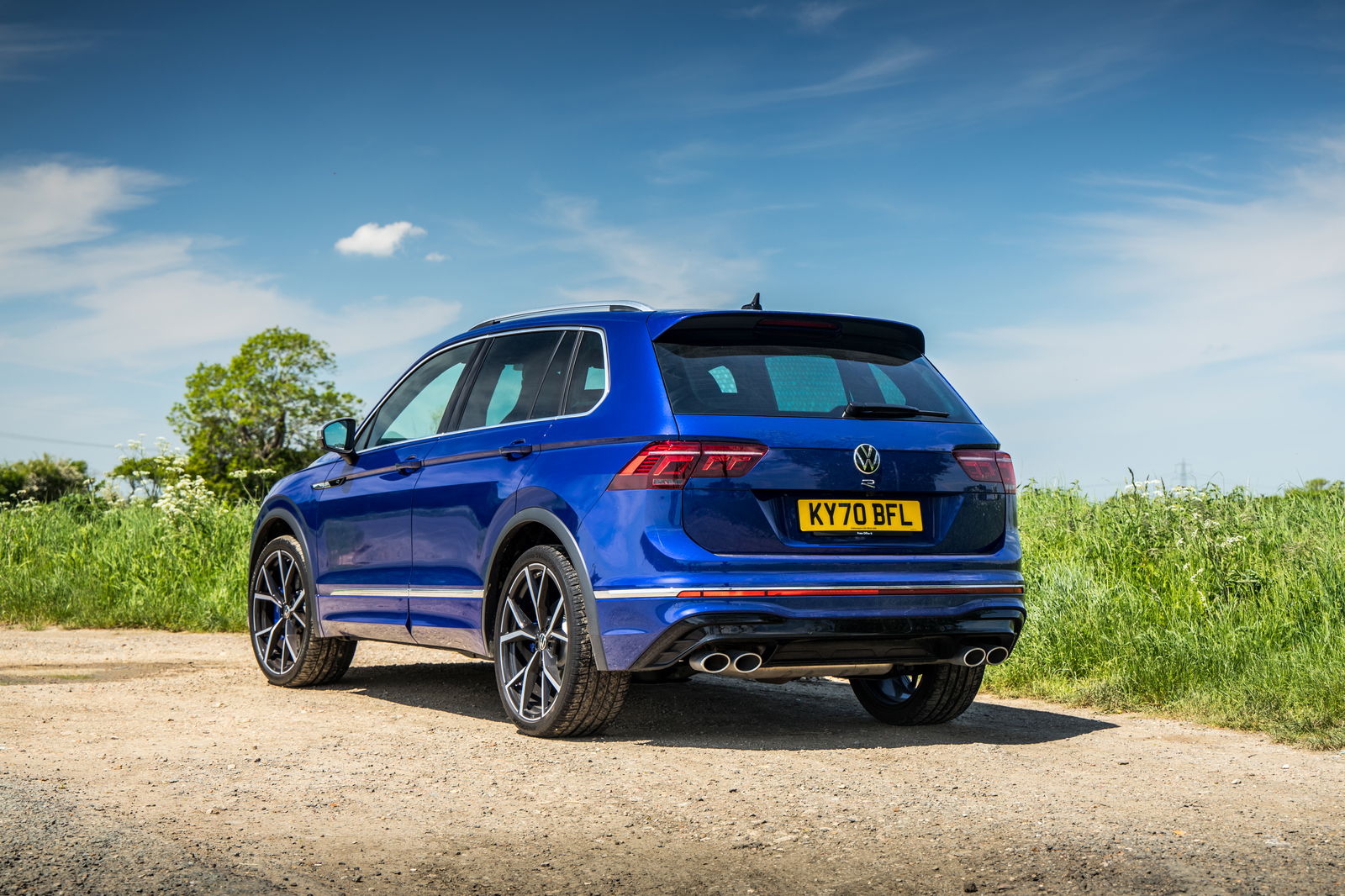
The Tiguan R’s problem is that it uses the same 316bhp inline-four as the Golf R. Power is unchanged, and here, the ‘EA888’ is tasked with propelling an extra 200kg or so. A 0-62mph time of 4.9 seconds sounds impressive enough, but the Tiguan’s loftier ride height robs the Golf’s impression of speed, making it seem slower than this figure suggests.
A glance at the speedometer reveals how quickly the car builds speed, though, and we certainly can’t grumble about the smooth, flexible nature of this engine. We’re just left wishing it was a little pokier here, or that VW had gone the way of sister brand Cupra with its inline-five-powered Formentor VZ5.
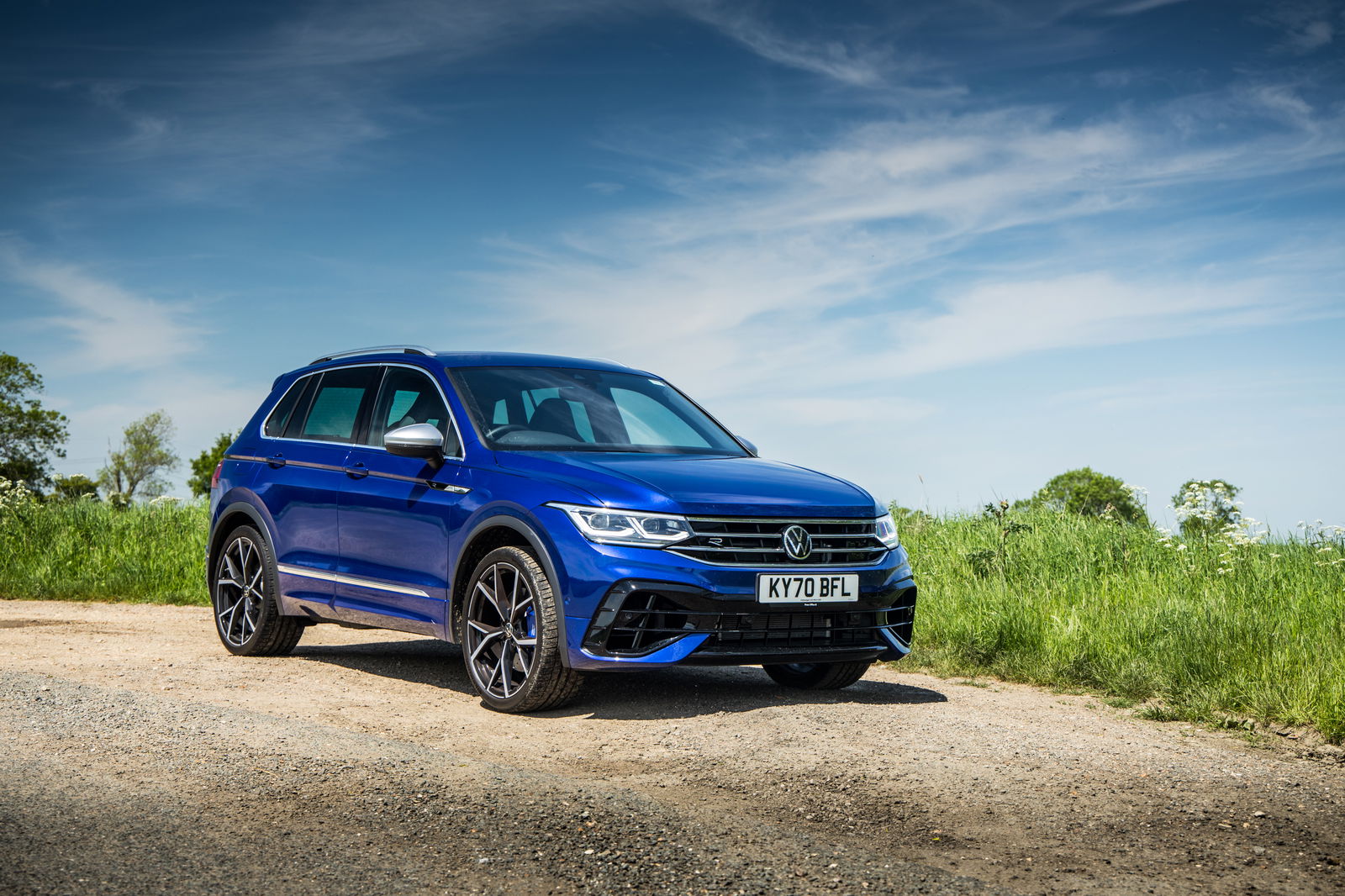
The pilfering of Golf R bits goes further, with the Tiguan taking the ‘R-Performance Torque Vectoring’ system also found in the Arteon R. Giving a full variation of the torque split between axles and the rear wheels, the system allows the Golf to do something its predecessors never could - power oversteer. But in the Tiguan? I only felt something going on at the rear axle once.
It’s certainly very capable, but so are all the other mid-level quick SUVs. A slightly more lively attitude, like what you get with the Golf R, might have given it a nice edge. But thanks to the extra ride height and mass, it’ll generally be understeer you experience when pushing things too far.
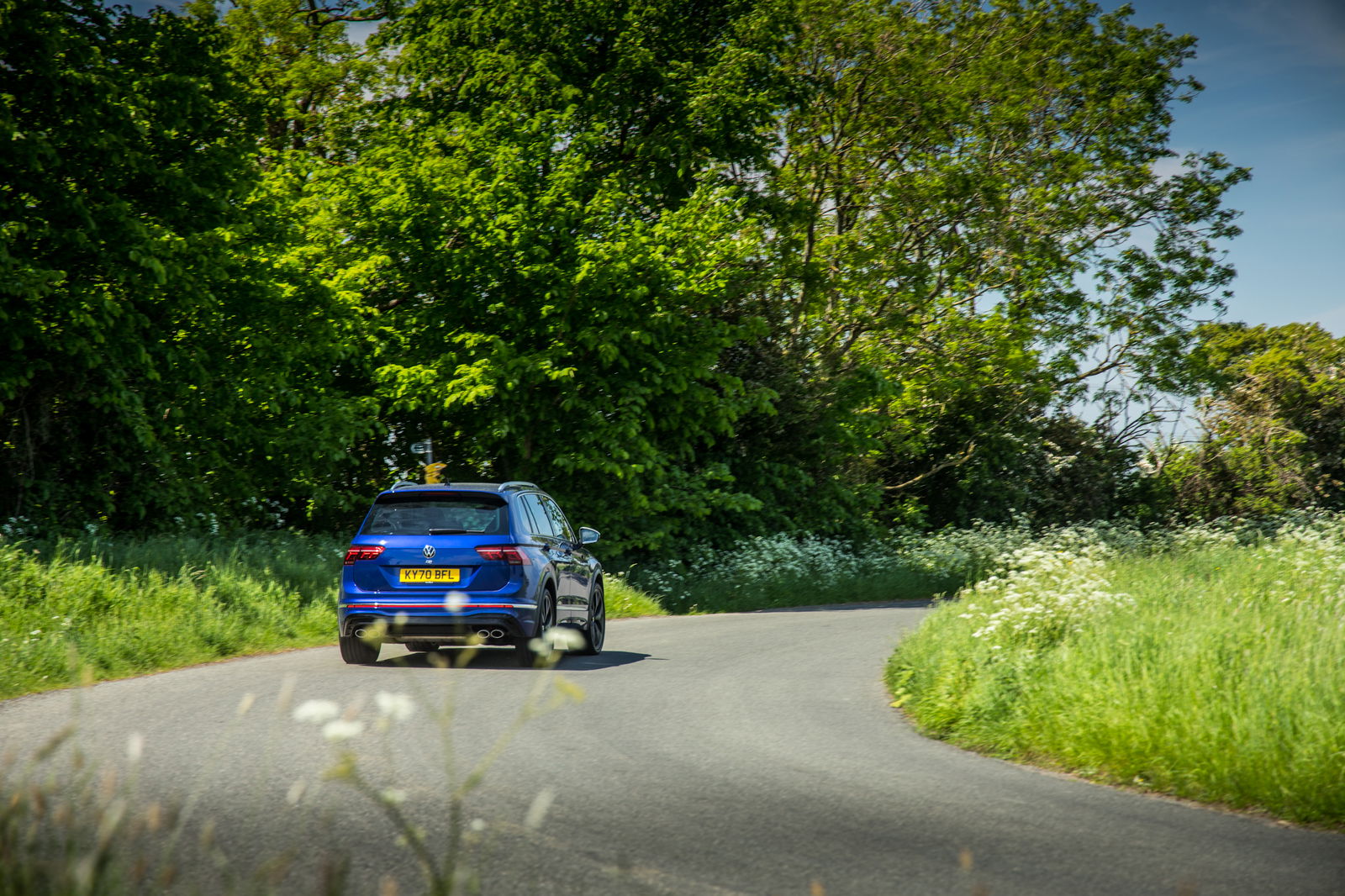
This tendency to occupy the middle ground runs through pretty much every aspect of the Tiguan R. The steering is a touch nicer than some rivals, but a long way off being class-leading. The body control in each of the damper modes is decent, but there are better cars out there in this regard.
Even the cabin, once a VW strong suit, isn’t as good as you might expect. While facelifting the Tiguan, VW decided to fit the Golf’s fiddly haptic button pads on the steering wheel and ditch the rotary climate controls for a button-based system with a weird and distracting slider for the temperature. Otherwise, it’s a well made and nicely-designed space, but it’s frustrating to see the controls get less useable via what’s supposed to be a mid-life improvement.
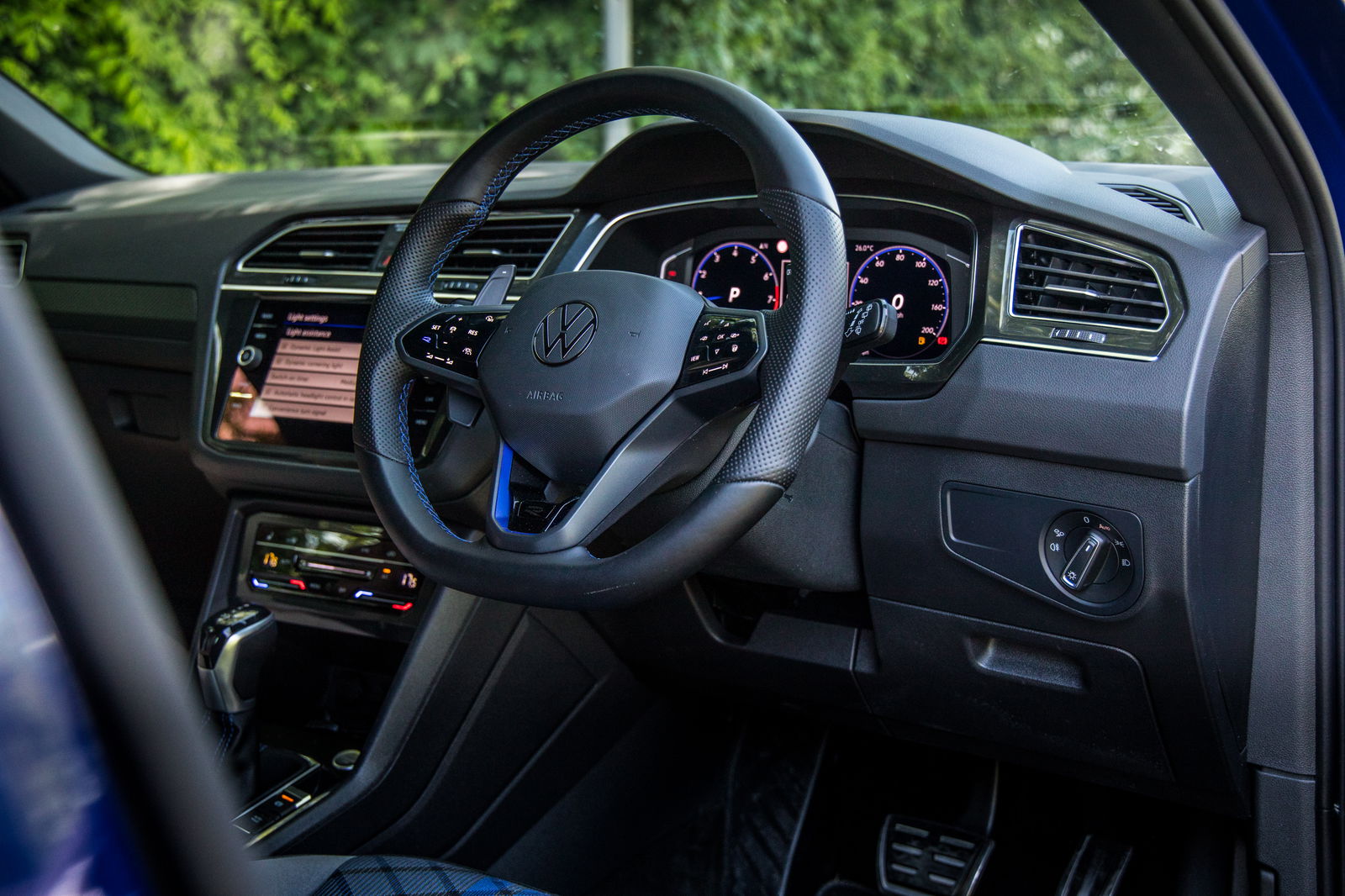
Like the Touareg R we tried recently, the Tiguan is another example of VW’s aggressive expansion of the R range yielding less than exciting results. And similarly, this smacks of a car that the R team felt they had to make, rather than one they wanted to.
It’s a far better car than the Tiguan, but it still underwhelms. With VW soon launching the lighter, lower Golf R estate, we’re left wondering what the point is in this warmed-up Tiguan, particularly when the big-booted Golf will cost much less than the £45,560 charged for this.
As an attractive crossover, though, we get the feeling that whatever anyone says about this car and however high the cost of entry might be, that VW is going to shift an absolute boatload of these.
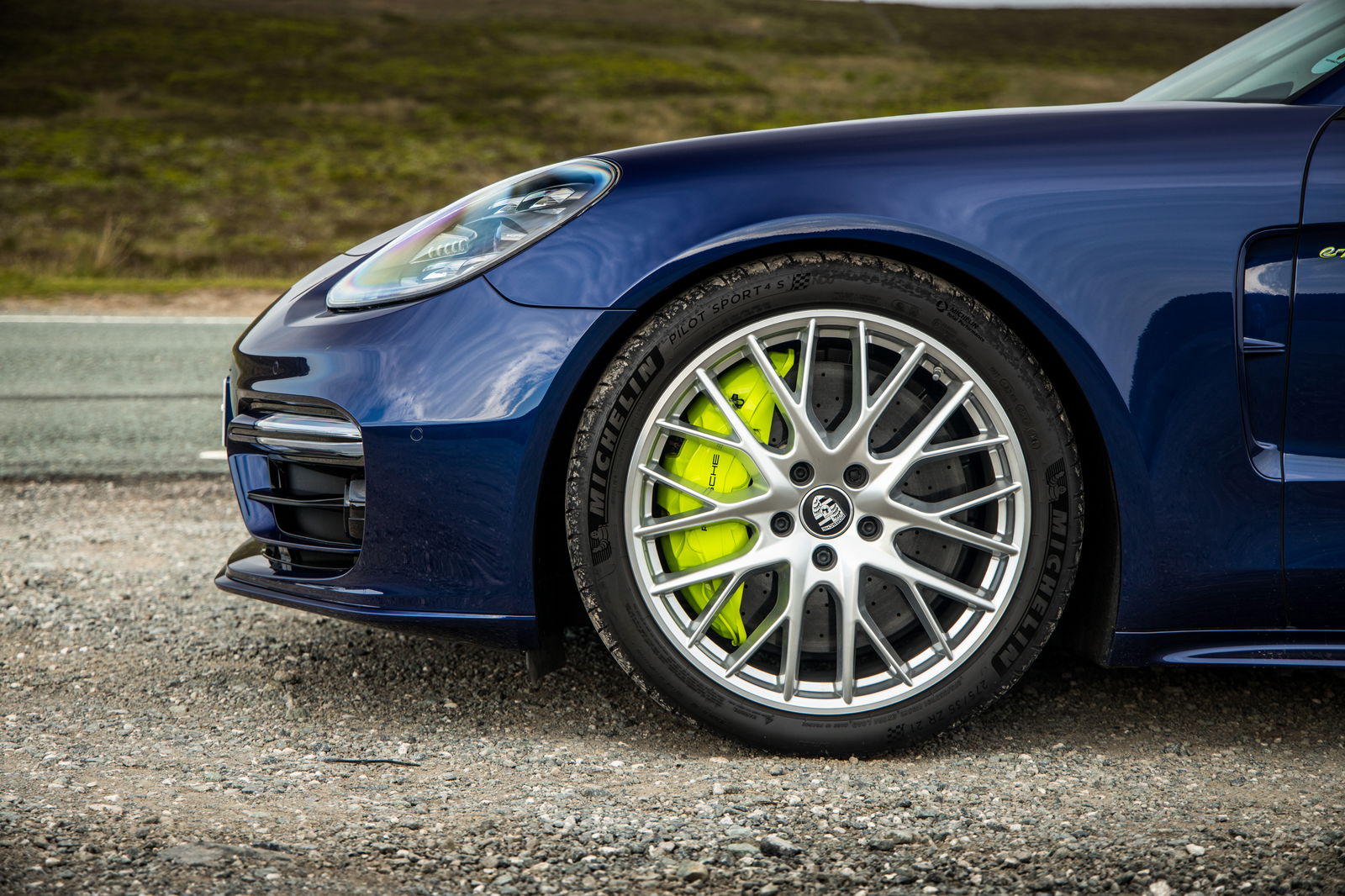
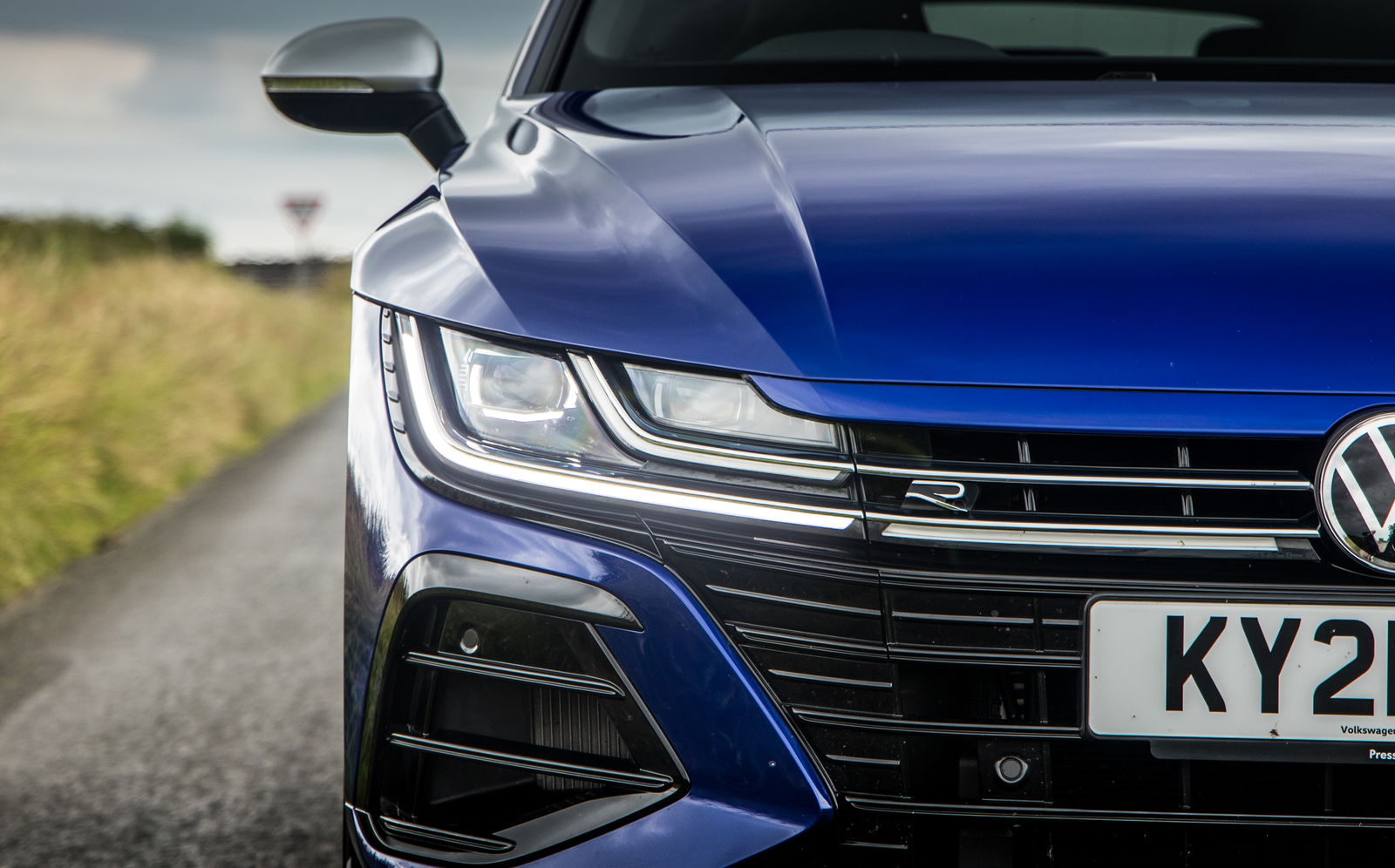

Comments